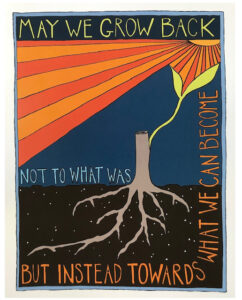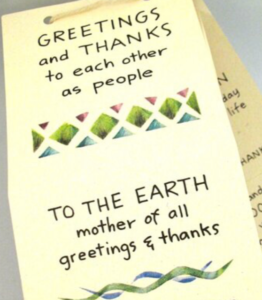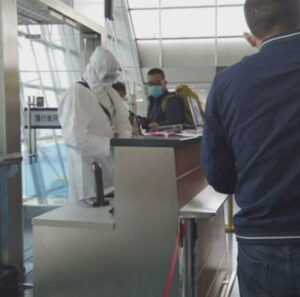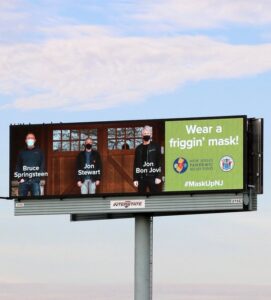Zoomsgiving…for those you love.
November 25, 2020Merci d’exister.
Creation by Jen Bloomer, Radici Studios
A Thanksgiving Prayer
Don’t get revenge when wronged, but seek reconciliation.
Don’t repay violence with violence, but seek creative and transforming nonviolent alternatives.
Don’t focus on external conformity to moral codes, but on internal transformation in love.
Don’t love insiders and hate or fear outsiders, but welcome outsiders into a new “us,” a new “we,” a new humanity that celebrates diversity in the context of love for all, justice for all, and mutual respect for all.
Don’t have anxiety about money or security or pleasure at the center of your life, but trust yourself to the care of God.
Don’t live for wealth, but for the living God who loves all people, including your enemies.
Don’t hate your enemies or competitors, but love them and do to them not as they have done to you—and not before they do to you—but as you wish they would do for you.
[Center for Action & Contemplation]
In the COVID days ahead,
‘…give us the courage of warriors,the strength of saints,the love of new mothers,the resilience of gravity,the patience of breath,the freedom of children.’
♡
H A P P Y T H A N K S G I V I N G
Columbia Journalism Review
Apocalypse Then and Now
by Julian Brave NoiseCat
Winter 2020
To be Indigenous to North America is to be part of a postapocalyptic community and experience. Indigenous journalists have always grappled with earth-shattering stories: either as historical background to current events or in the deep despair of the still-unfolding legacy of Indigenous dispossession, displacement, and death that brought nations like the United States and Canada into being. This perspective tests the limits of journalism, asking reporters to cover marginalized subjects unfamiliar to most readers with an eye on the people, histories, and systems buried and erased by colonization—all without losing the thread of the narrative.
Kyle Whyte, a Citizen Potawatomi philosopher and professor of environment and sustainability at the University of Michigan, described the challenge facing Indigenous journalists succinctly: “In the space of a short piece that’s widely accessible, how do you write in a way that includes a structural analysis and a sense of history that many readers don’t initially understand?”
For insight, I called Candis Callison, an associate professor at the University of British Columbia’s School of Journalism and a member of the Tahltan people. She described her preferred approach as “systems journalism”—a methodology that treats news items not as isolated events but as “windows into what’s happening in underlying systems and structures.” The narratives we tell about our past and present delineate possible avenues for future action, Callison said. She urges journalists to consider how white and colonial perspectives frame our current society as normative and permanent, erasing the history of genocidal colonialism that brought us here. Systems journalism often brushes up against established methods, however. “The forms and styles that are dominant in journalism practice,” Callison told me, “don’t always allow us to get at the historical context that is vital.”
Our stories, field notes, and communities ask a great deal of us as journalists—and, particularly, as Indigenous journalists and journalists of color—especially in moments of grave consequence, like the present. It’s hard, and in some cases impossible, to give yourself, your audience, your community, your sources—and perhaps also your land, your water, your relations—everything they want and deserve in your work. Indigenous experiences and perspectives challenge the notion that a press corps equipped with notepads and recorders can capture the whole truth. More often than not, I’m convinced that reality defies the disciplined space of stories, waging an epistemic resistance against the tyranny of language, text, and form—something we Indians can relate to.
https://www.cjr.org/special_report/apocalypse-then-and-now.php
Millions of Americans: ‘COVID?’ 
AP
Defying warnings, millions in the US travel for Thanksgiving
Millions of Americans took to the skies and the highways ahead of Thanksgiving at the risk of pouring gasoline on the coronavirus fire, disregarding increasingly dire warnings that they stay home and limit their holiday gatherings to members of their own household.
Those who are flying witnessed a distinctly 2020 landscape at the nation’s airports: plexiglass barriers in front of the ID stations, rapid virus testing sites inside terminals, masks in check-in areas and on board planes, and paperwork asking passengers to quarantine on arrival at their destination.
More than 88,000 people in the U.S. — an all-time high — were in the hospital with COVID-19 as of Tuesday, pushing the health care system in many places to the breaking point, and new cases of the virus have been setting records, soaring to an average of over 174,000 per day.
Orlando International Airport
AXIOS
If you are gathering with people outside your household, at the very least:
- Open windows if you can, or sit outdoors.
- Wear masks when you aren’t eating.
- Use separate bathrooms if possible.
- Don’t share towels.
- Use HEPA filters.
- Limit the duration of your visit.
Bruce Springsteen: “Teamed up with some fellow New Jerseyans to encourage everyone this holiday season to wear a friggin’ mask. Let’s all come together and #MaskUpNJ so we can get back to what we do best – singing along and dancing together.”





